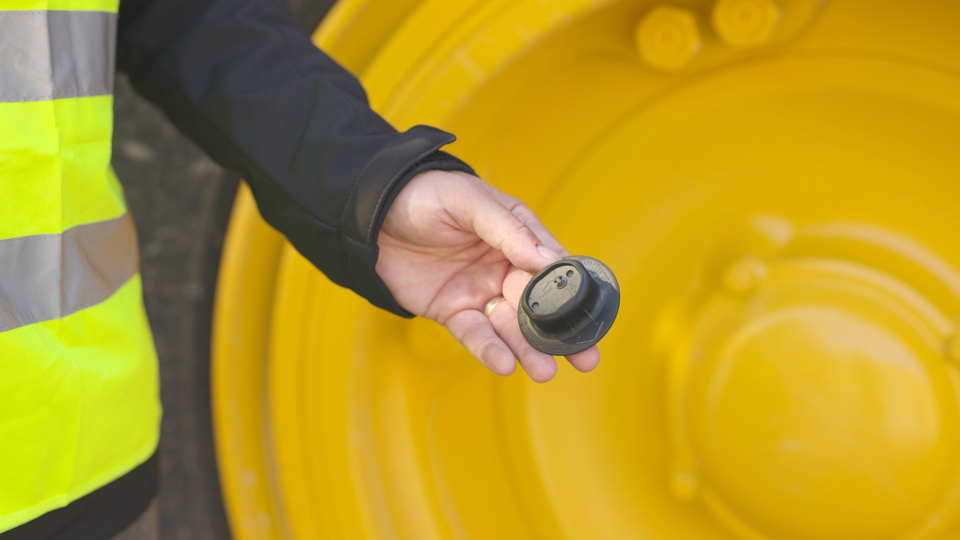Tyre manufacturers are treading a tightrope between meeting the needs of vehicle manufacturers who must adhere to the vehicle energy consumption tool (Vecto), introduced by the European Commission to determine CO2 emissions and fuel consumption targets, and the demands of fleets for long lasting, durable products.
Adding further complexity are the impending Euro 7 regulations which will measure particulate emissions from tyres.
“The OEMs need low rolling resistance to hit their targets and the fleets wants high mileage, durable tyres,” said Steve Howat, Continental general manager, technical services, who points to testing of the company’s own HS5 and HD5 truck tyres which showed mileage improvements of 15-20% while minimising resistance.
“Our challenge is to close the gap between those two needs,” he added. “It gives huge design dilemmas.”
Tyre lifecycles are shortening, with revisions and improvements often occurring within two years to meet changing demands and new rules.
“Next year we will launch a new product that is focused on meeting both fleet and manufacturer needs, especially with Euro 7 in mind,” Howat told Fleet News at last month’s Road Transport Expo at Stoneleigh. “It will bridge the gap.”
Euro 7 will reduce fleet options on second fit brands, particularly budget options, because the components used throughout the life of the vehicle must continue to achieve the same emissions level.
“Tyres had been evolving gradually, but now it’s a revolution because of Euro 7,” Howat said. “It will change the shape of the industry and will require manufacturers to invest a lot more in R&D.”
Also evolving rapidly is the intelligent tyre, which Continental digital solutions manager Ian Jackson describes as “tyre pressure monitoring on steroids”.
A sensor in each tyre measures pressure and temperature and relays the information to the fleet in two ways: via a yard/depot reader or ‘as live’ updates every 16 seconds.
The former is an ideal solution for companies whose vehicles return to base each day, while the live option is targeted at long distance firms. The yard reader also uploads data if the truck passes the reader in another company’s yard.
Available on van and truck tyres, the system displays the data as red/amber/green enabling the fleet to easily identify its biggest concerns. The information includes pressure and how quickly it is reducing, related to the temperature.
Continental’s ContiConnect Gen 2 sensor, launched last month, also counts each tyre revolution to identify how quickly it is wearing in relation to distance travelled to provide a predicted pull point for replacement. It is Bluetooth enabled to ensure it is future proofed for further developments and can be accessed on desktop and via an app.
“We want to include tread depth and load distribution as well which we hope will be within a year or so,” said Jackson.
The fleet savings are potentially huge. A 10% reduction in tyre pressure results in a 2.5-3% increase in fuel consumption, while the predictive replacement feature minimises downtime and reduces potential time penalties and roadside breakdowns.
Several hundred customers are running the system. One of them, G.Webb Haulage, a quarry and recycling business with more than 70 trucks, has reported roadside issues down by 83% and out of hours calls reduced by 95%, with a monthly fuel saving of £1,646.
Paul Broker, fleet engineering director at G.Webb, said: "ContiConnect 2.0 has changed how we run our business. Now we are in a proactive environment - we are repairing punctures at an early stage so never at the side of the road and it's changed the way we load our workshop."
He added: "The system saves on missed loads through the fact that we don't have drivers coming in in the morning with a flat tyre. It decreases our fuel consumption and alerts us about any braking issues or wheel bearing issues. It has transformed our business."
Continental is currently testing a new all-season van tyre, Contact A/S Ultra which features a reinforced sidewall to protect against kerbing in urban environments.
It also produces a version which self-seals a puncture of up to 6mm, making it as good as new for continued driving. This technology will soon be available on its car tyres.
“It’s a low viscosity liquid covering the tyre which completely seals the puncture, so you don’t have to replace the tyre,” said Jackson. “And if you spot the nail, it can be removed, and the tyre can still be repaired.”





















Login to comment
Comments
No comments have been made yet.